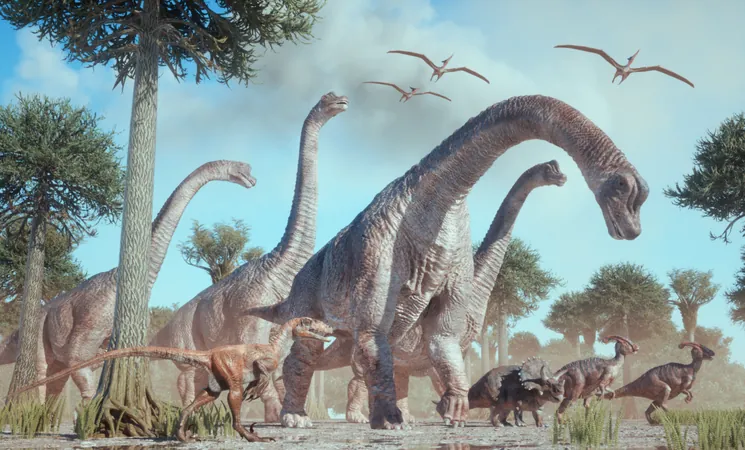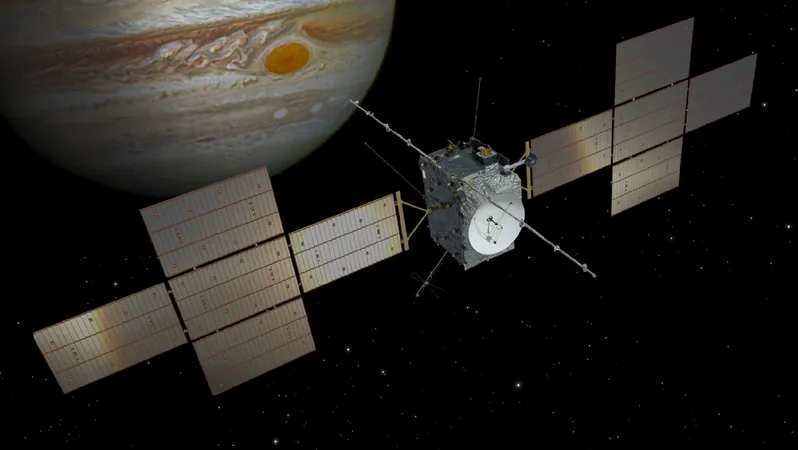
Groundbreaking Dinosaur Discovery: Footprints Uncover Ancient Herding Behavior
2025-07-25
Author: William
A Remarkable Discovery in Dinosaur Provincial Park
Deep within Alberta's Dinosaur Provincial Park, a recent finding is turning long-held beliefs about dinosaur behavior on their head. For more than a century, this fossil-rich area has revealed countless dinosaur bones, but in 2024, something unexpected emerged—pristine footprints. Dozens of tracks from various species, moving together, have painted a vivid picture of life during the Cretaceous period.
The Astonishing Skyline Tracksite
Uncovered during an international field course, this new track site—dubbed the Skyline Tracksite—has yielded an extraordinary find: the first natural mold dinosaur tracks documented in the park. This landmark discovery indicates that multiple dinosaur species wandered together in herds, similar to modern mammals.
A Glimpse into Cretaceous Life
These footprints capture an incredible moment from 76 million years ago. Among the discoveries were prints from thirteen distinct horned dinosaurs, suggesting that at least five individuals traveled side by side. Notably, the footprint of an armored ankylosaur was found amongst them, hinting at a coordinated group movement—a sign these animals may have banded together for safety.
Herding for Safety Like Today’s Wildlife
The concept of mixed-species herding is rare in the dinosaur record. Just as modern zebras and wildebeests team up for protection against predators, these ancient creatures likely did the same. Dr. Brian Pickles from the University of Reading exclaimed, "Walking in the footsteps of dinosaurs 76 million years later was incredibly exciting!" Nearby, two giant tyrannosaur tracks were found, raising questions about whether these predators were lurking, potentially stalking the herd.
A Treasure Trove of Fossils
Dinosaur Provincial Park is famed for its fossil abundance, but footprints are less common due to the park's unique geology. Steep slopes and erosion usually prevent fossil footprints from surviving. Most previously identified tracks came from fragile sediment lumps that deteriorate quickly. In contrast, the Skyline Tracksite preserves footprints created in soft mud, which fossilized over time.
Meticulous Excavation of History
Excavation of the site was a painstaking process, covering an area of 29 square meters and utilizing tools like trowels and brushes. Advanced techniques like photogrammetry captured the layout in 3D, enabling precise documentation of each print and its details.
Unprecedented Insights into Dinosaur Behavior
Footprints can reveal details about dinosaur behavior that bones alone cannot. Jack Lovegrove, a paleontologist, pointed out that while bone beds imply herding, these footprints confirm it. The Skyline Tracksite provides a first-of-its-kind proof that ceratopsians traveled and lived in groups, enhancing our understanding of their social lives.
Peering into an Ancient Ecosystem
The site harbors evidence of a complex ecosystem from 76.5 to 74.4 million years ago, comprising rivers, floodplains, and forests. The geological analysis confirms that the tracks were formed in a riverbed after floods filled it with fine mud, leading to the preservation of these valuable prints.
The Promise of Future Discoveries
Dr. Caleb Brown of the Royal Tyrrell Museum believes this find is a pivotal moment for paleontology. It marks the beginning of a new era in track research and has already led to more discoveries in the area. The Skyline Tracksite not only reveals unparalleled insights into dinosaur life but also hints at the treasure still buried within Dinosaur Provincial Park.









 Brasil (PT)
Brasil (PT)
 Canada (EN)
Canada (EN)
 Chile (ES)
Chile (ES)
 Česko (CS)
Česko (CS)
 대한민국 (KO)
대한민국 (KO)
 España (ES)
España (ES)
 France (FR)
France (FR)
 Hong Kong (EN)
Hong Kong (EN)
 Italia (IT)
Italia (IT)
 日本 (JA)
日本 (JA)
 Magyarország (HU)
Magyarország (HU)
 Norge (NO)
Norge (NO)
 Polska (PL)
Polska (PL)
 Schweiz (DE)
Schweiz (DE)
 Singapore (EN)
Singapore (EN)
 Sverige (SV)
Sverige (SV)
 Suomi (FI)
Suomi (FI)
 Türkiye (TR)
Türkiye (TR)
 الإمارات العربية المتحدة (AR)
الإمارات العربية المتحدة (AR)